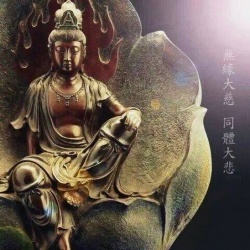Dzogchen Nyinghig three causes of ignorance
In the system of the Dzogchen Nyinghig three causes of ignorance are described -- those three are essence, nature and compassion. This is why there are three ignorances in this system. The system of explanation of Gongpa Zangthal is a little different, with only two ignorances -- we will continue with the Dzogchen Nyinthig system.
According to Garab Dorje, prior to the arising of the basis which is latent during the dark eon interval, nevertheless there are traces of affliction and action remaining from the previous eon. Because of these traces, the basis is stirred, the five lights appear and so on (this is why the Dzogcgen doctrine of two different kinds of Buddhahood is critical -- the first, the buddhahood that reverts the basis is the buddhahood asserted by all lower vehicles. The buddhahood that does not revert to the basis is the preserve of only Dzogchen).
The Gongpa Zangthal cycle supplies that during the arising of basis there is a neutral awareness (shes pa lung ma bstan) in the basis that does not recognize itself. This non-recognition is the innate ignorance. When this neutral awareness cognizes the five lights there is a dividing line between nirvana and samsara. When a neutral awareness recognizes the appearance of the basis as its own appearances it is is prajñā and is immediately liberated. That is Samantabhadra. A neutral awareness that does not recognize appearances as its own appearances immediately is the imputing ignorance, and samsara begins (again) because subject and object is imputed. This is all very clearly explained in detail in the eleven topics of Dzogchen Nyinthig. This is also clearly explained by Khenpo Ngawang Palzang.
Key point: innate enlightenment arises simultaneously with innate ignorance.
After the basis arises, innate ignorance is first and even Samantabhadra has it. There is period where a neutral awareness does not recognize itself in anyway. That is the innate ignorance. It (the neutral awareness) can only recognize itself through the display of five lights. When it recognizes that display as its own display, then this is the liberation of Samantabhadra without the performance of an iota of virtue. We on the other hand did not recognize these five lights as our own display, and for us, samsara began, without even an particle of non-virtue having been done.
According to Dzogchen teachings, all sentient being attain Buddhahood by the end of the eon -- this is very clearly stated by Garab Dorje in the commentary above. But there are two kinds of Buddhahood, and as I said above, there is only Buddhahood that does not revert to the basis, and that is the Buddhahood attained through Dzogchen methods. The Buddhahood of other vehicles reverts to the basis, without the corresponding result.
Now then, the reason why we cannot take these metaphors in Uttaratantra literally is that the basis is not Buddhahood. If the basis were Buddhahood, there would be no need for any kind of recognition.
In Dzogchen, there is a difference between the basis and the result. The difference is simply vidyā and avidyā and the recognition and non-recognition that comes from those.
Further, it is not enough merely to understand the general original basis. One must also understand the human body as a basis.

